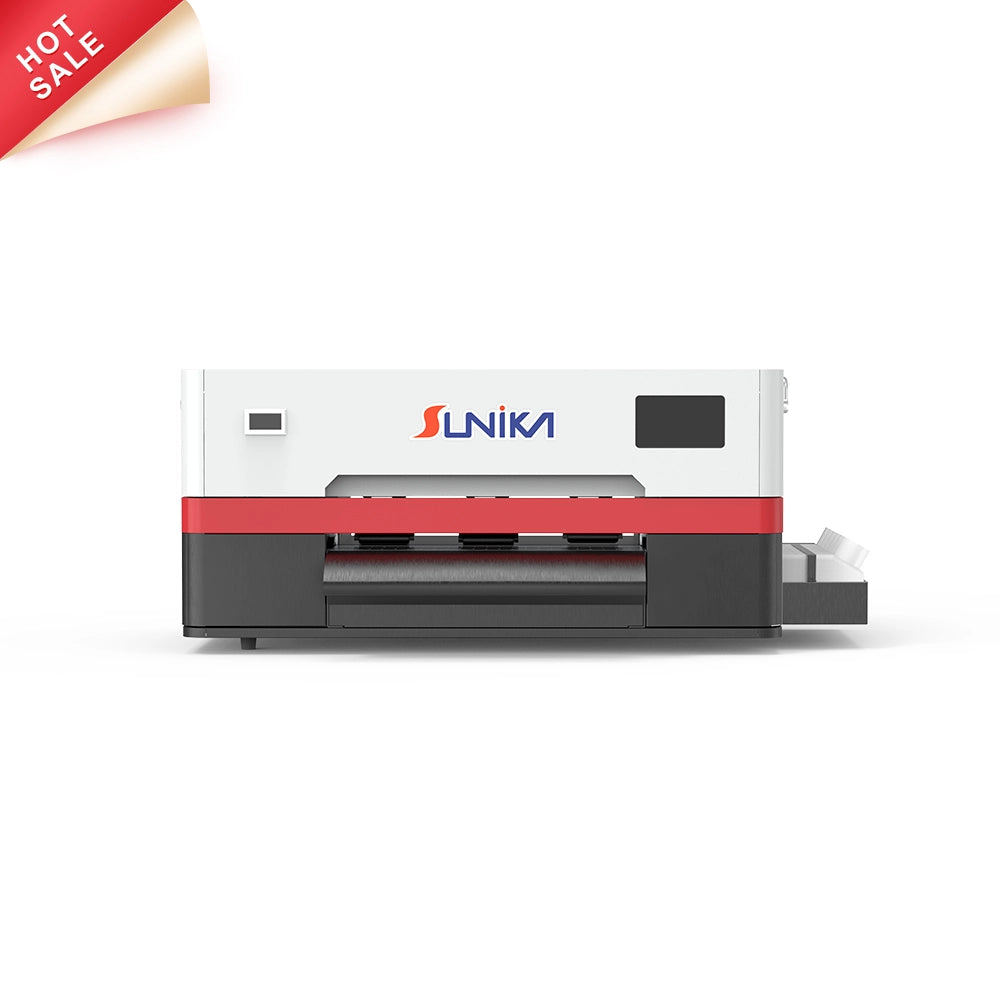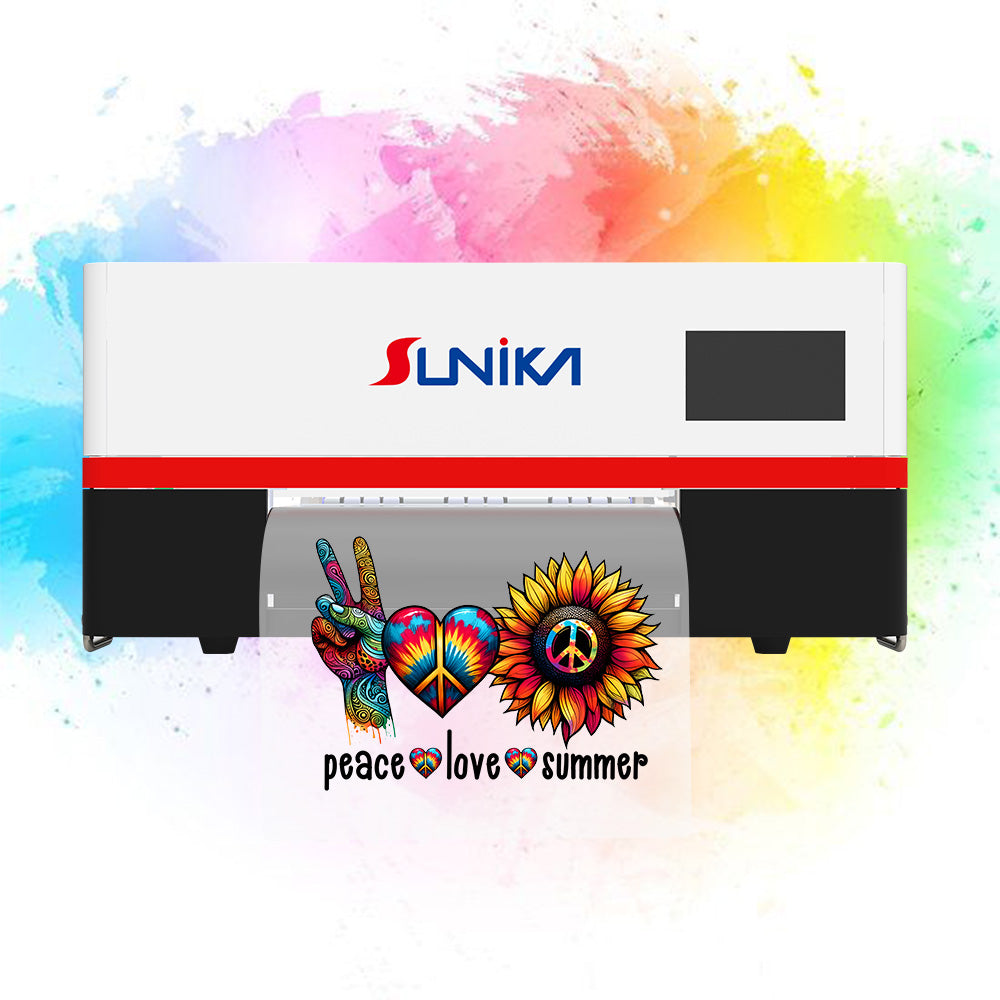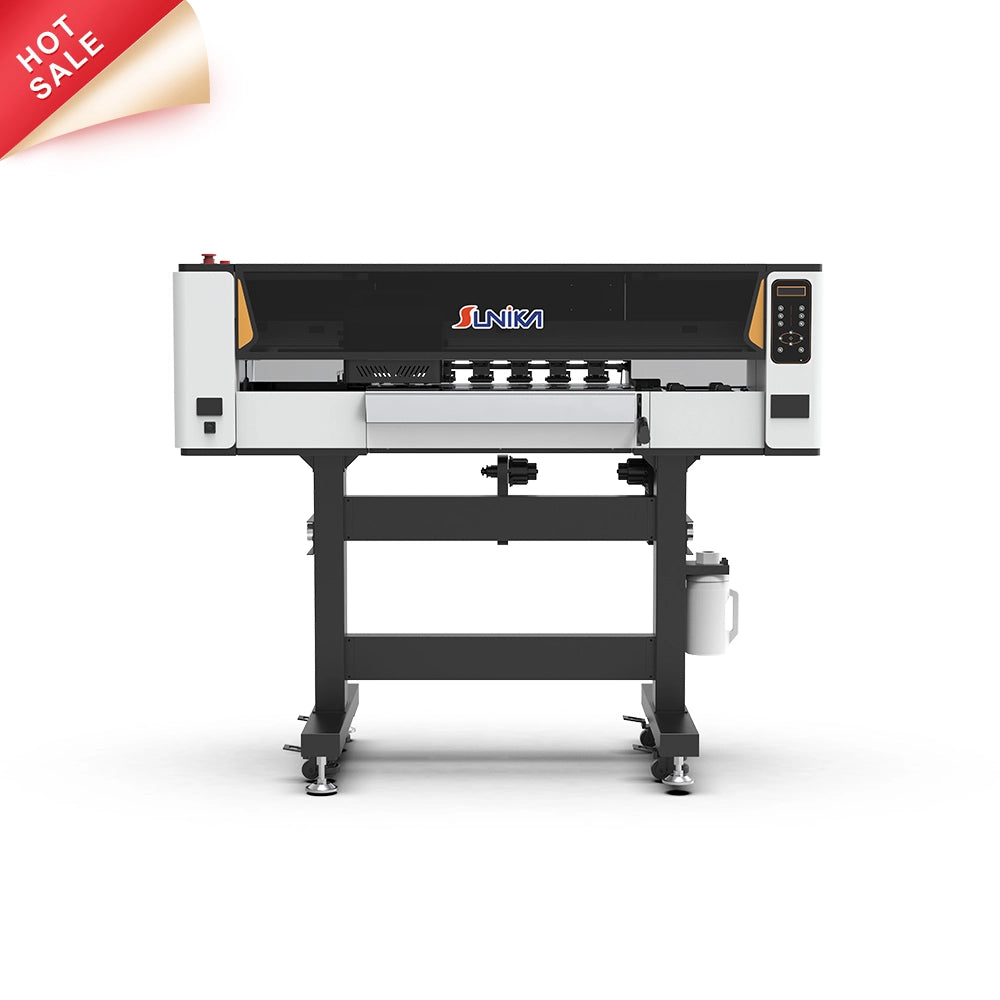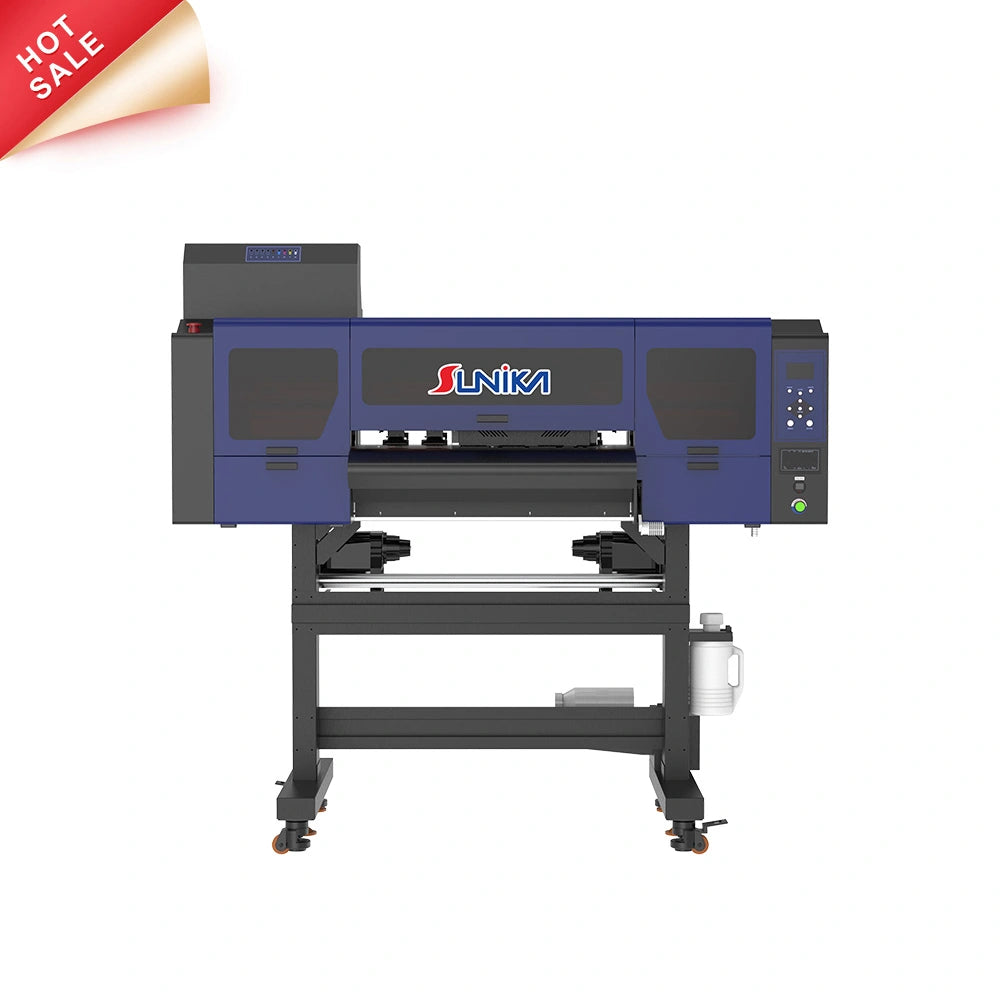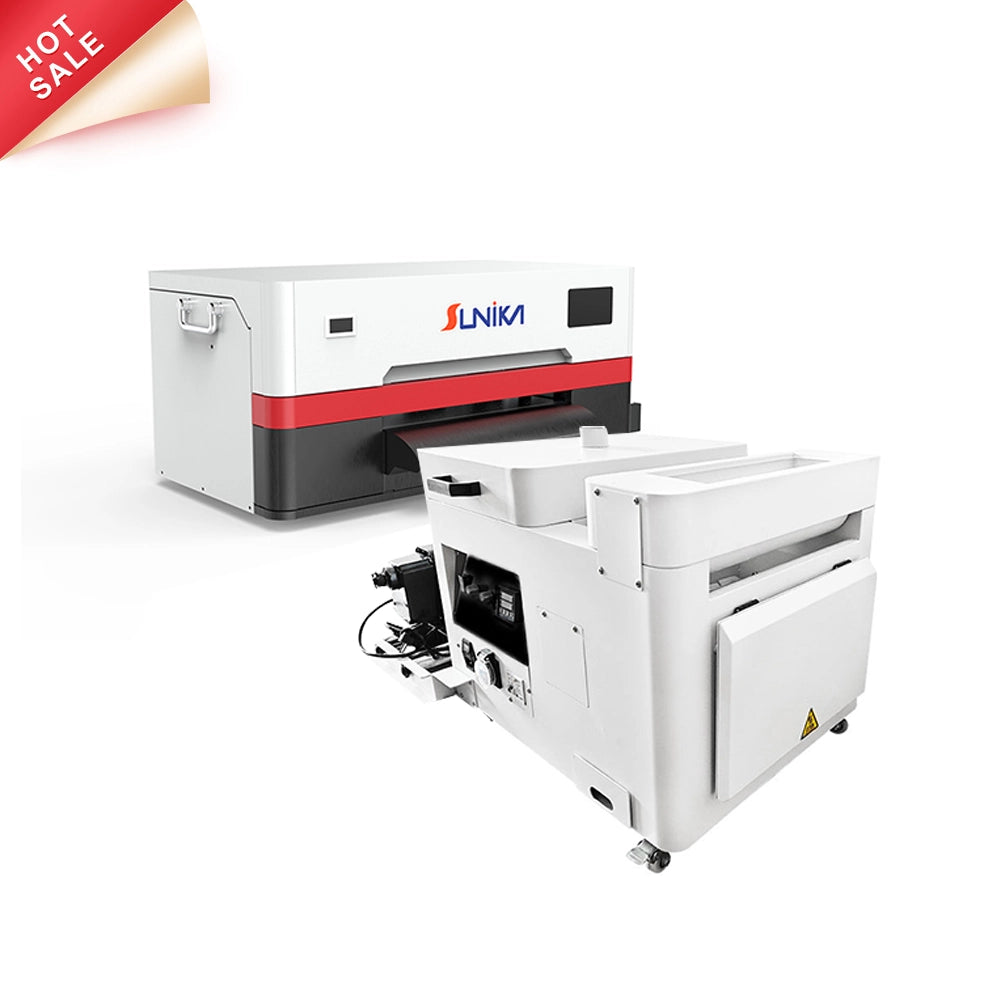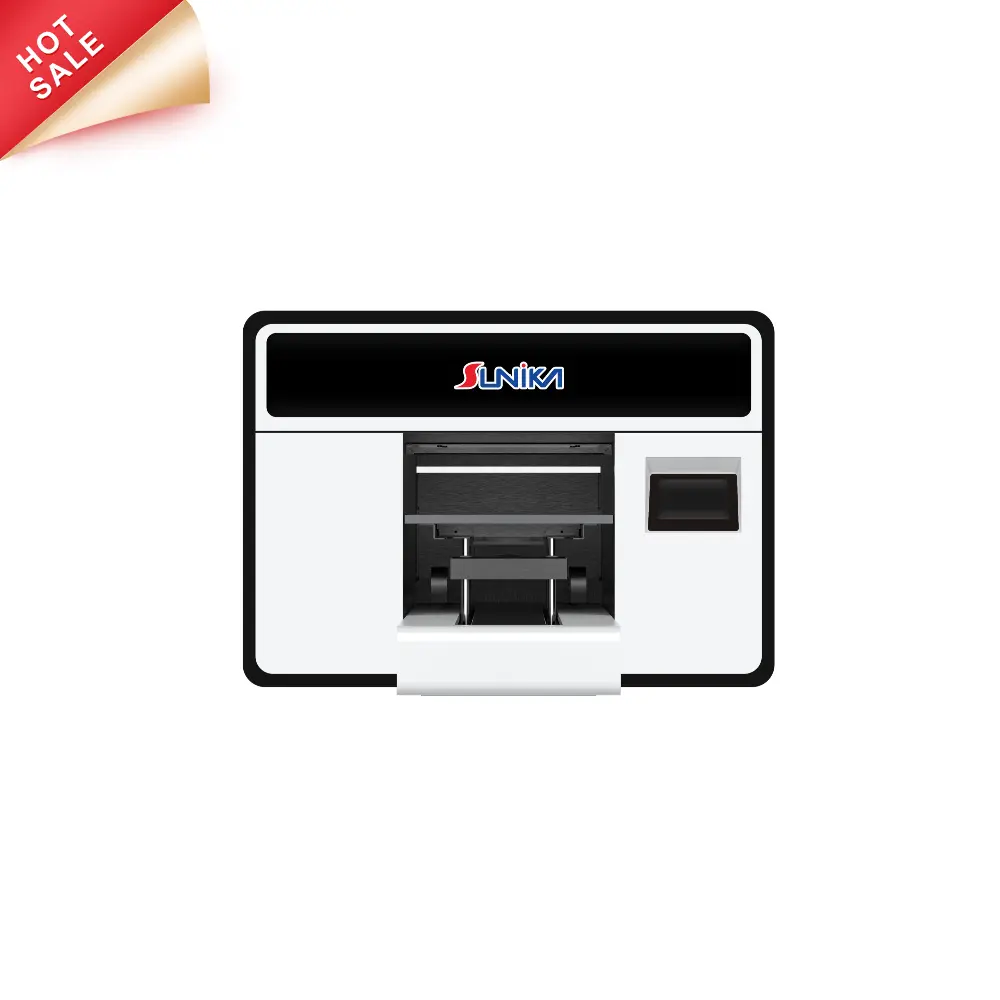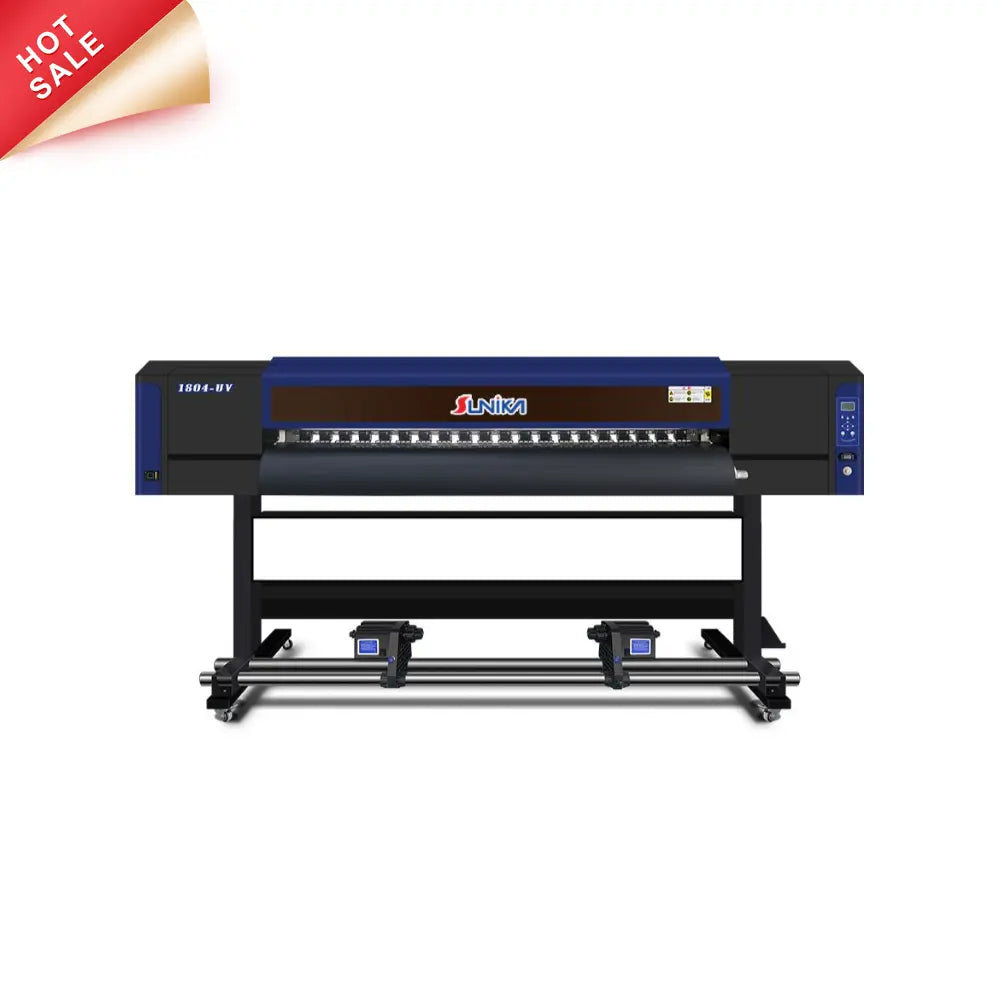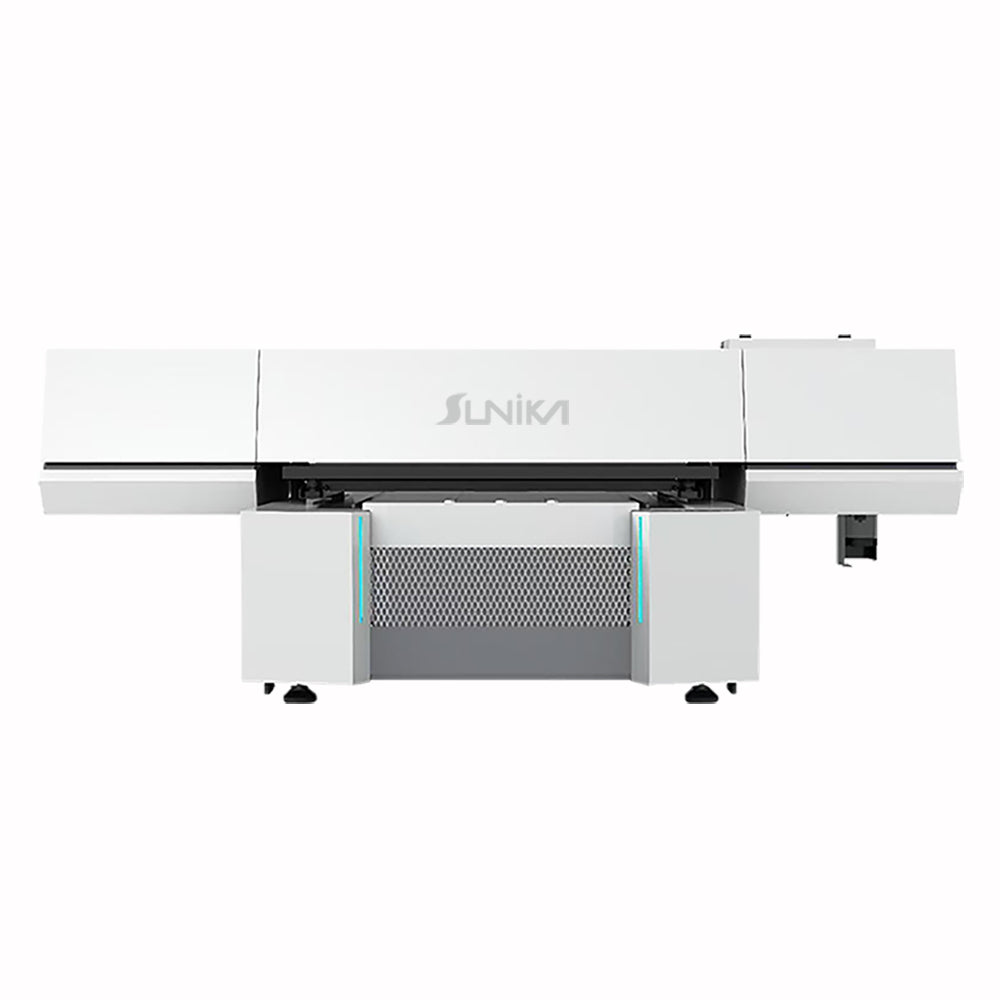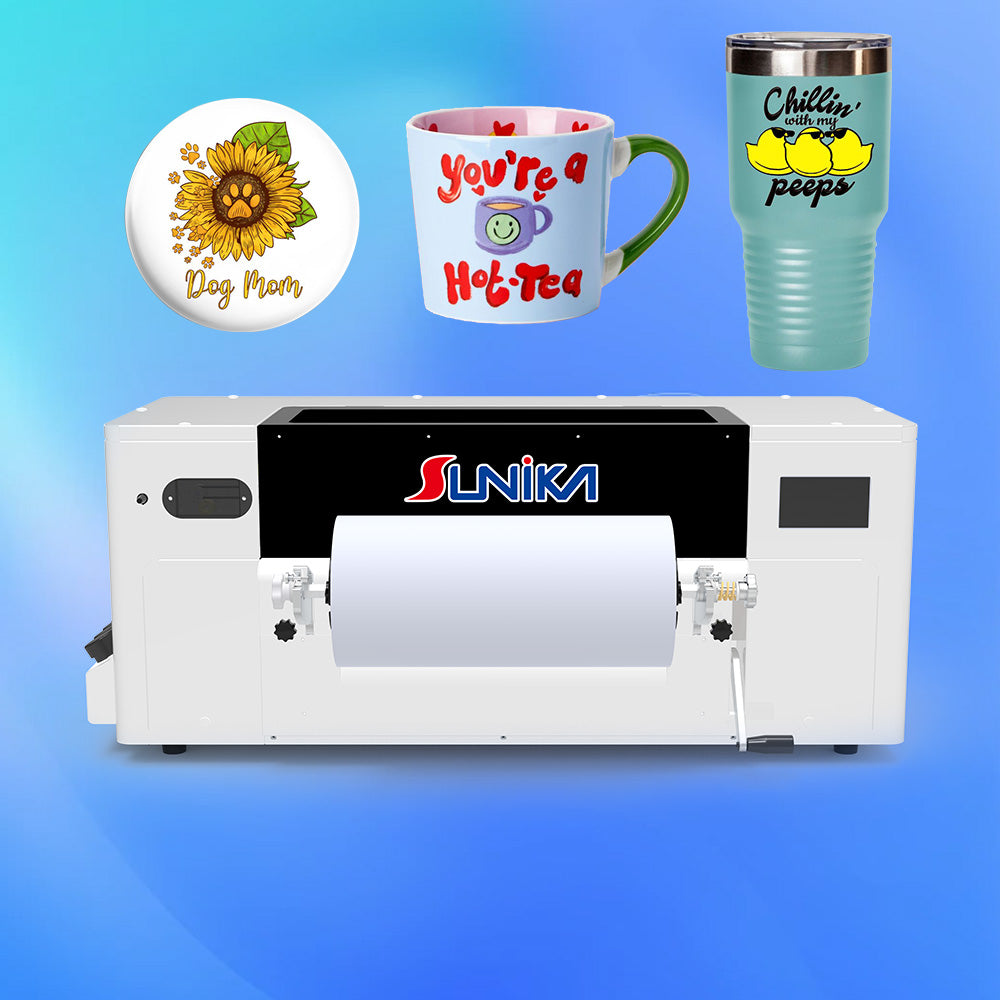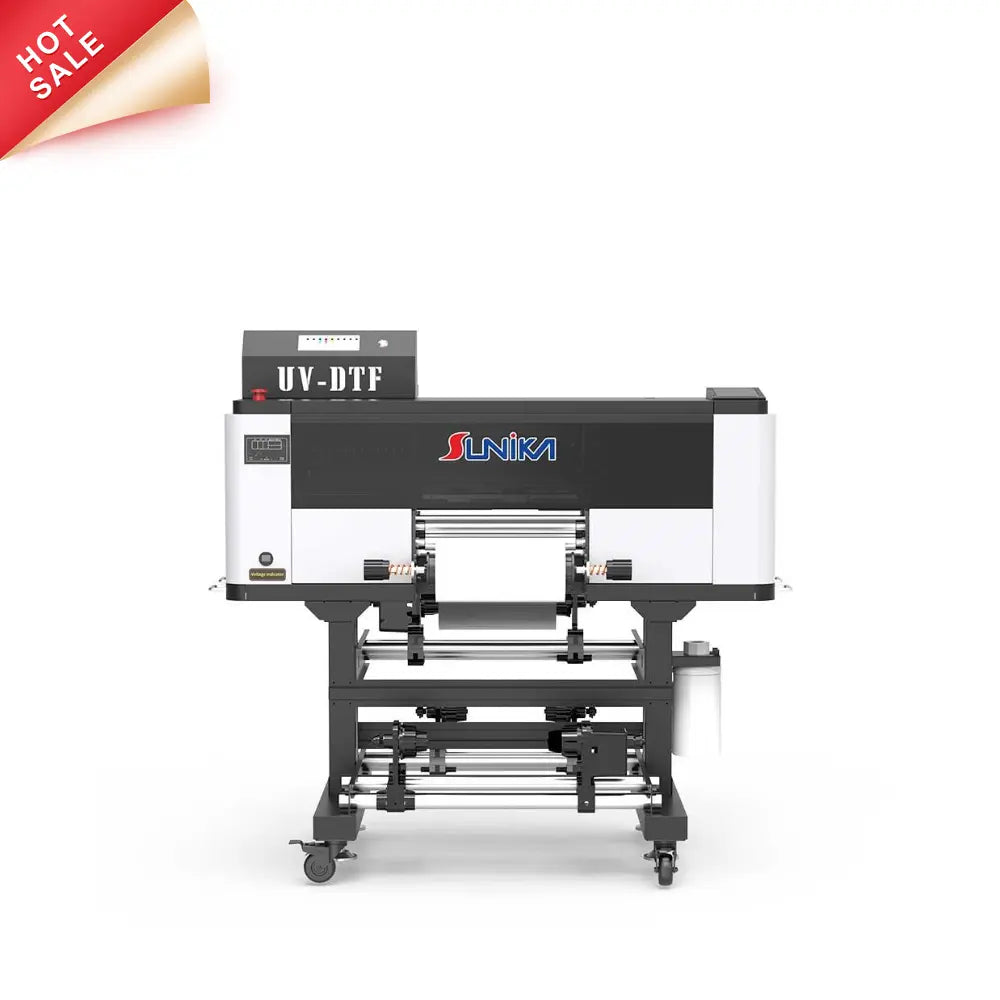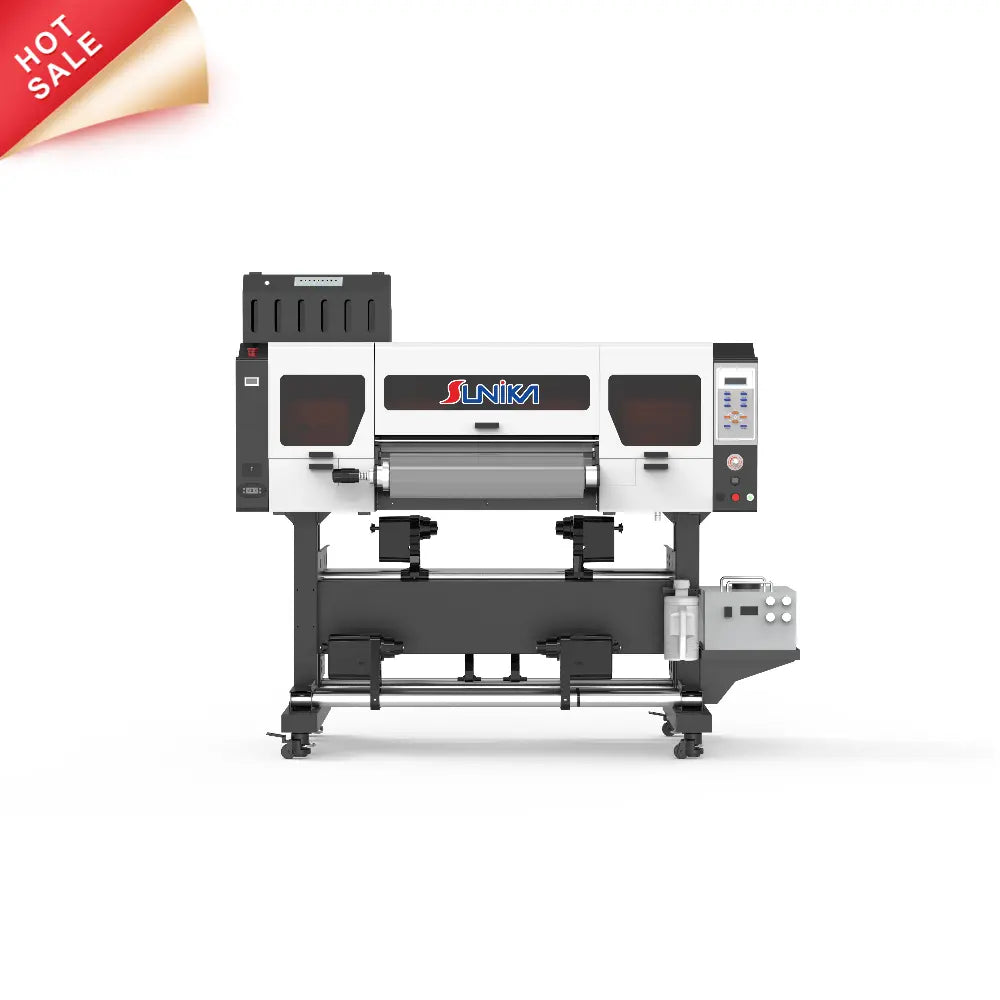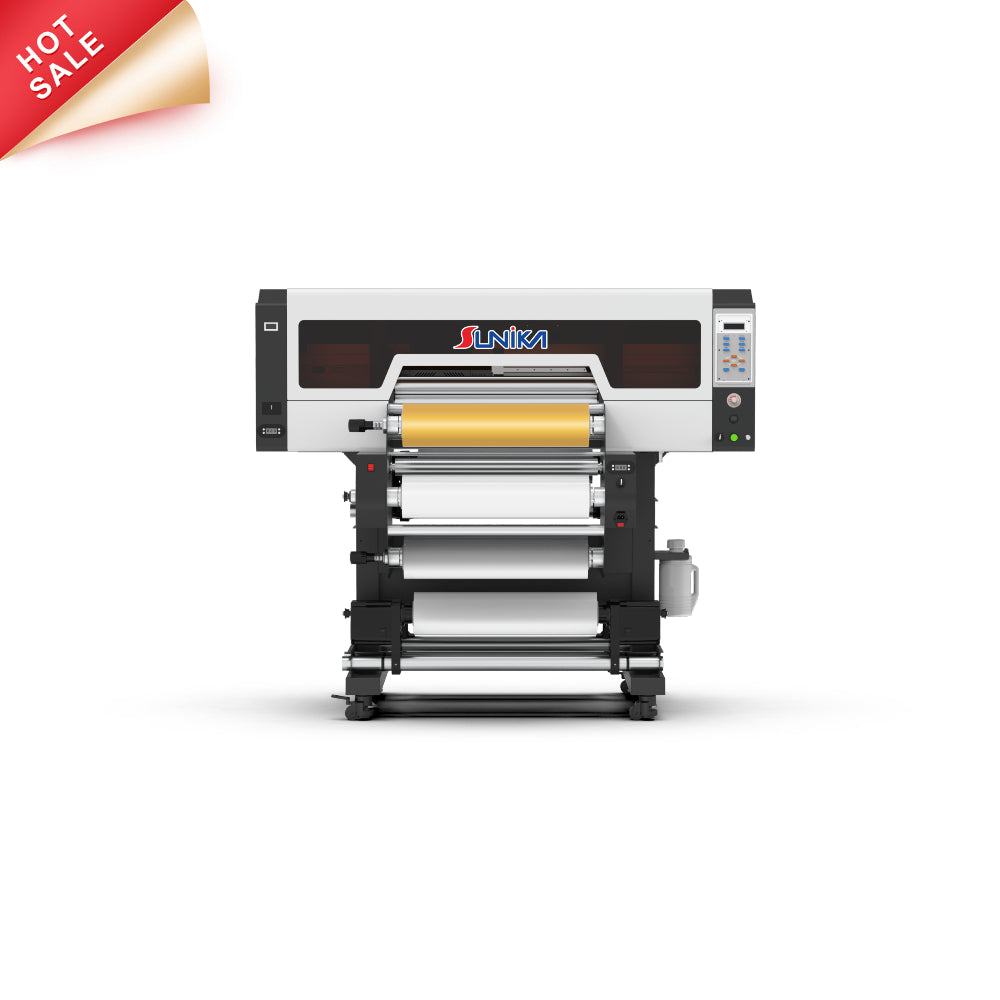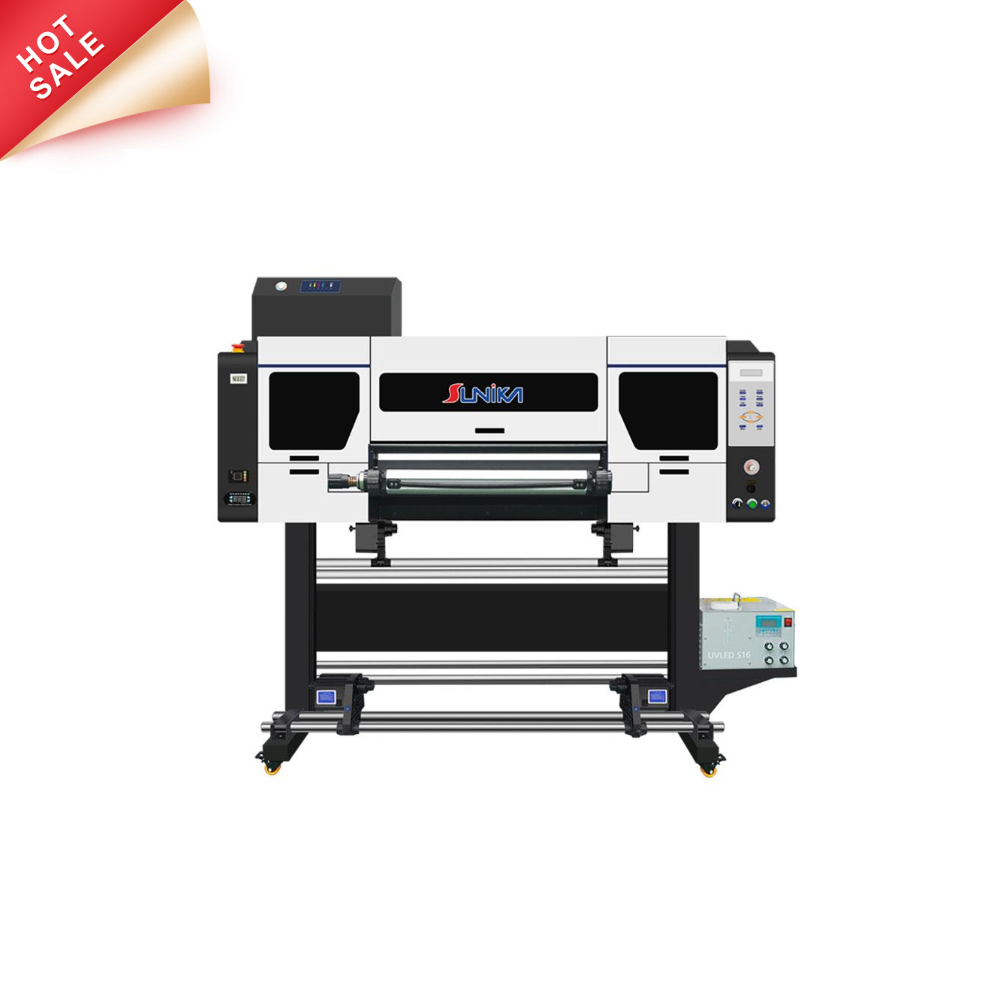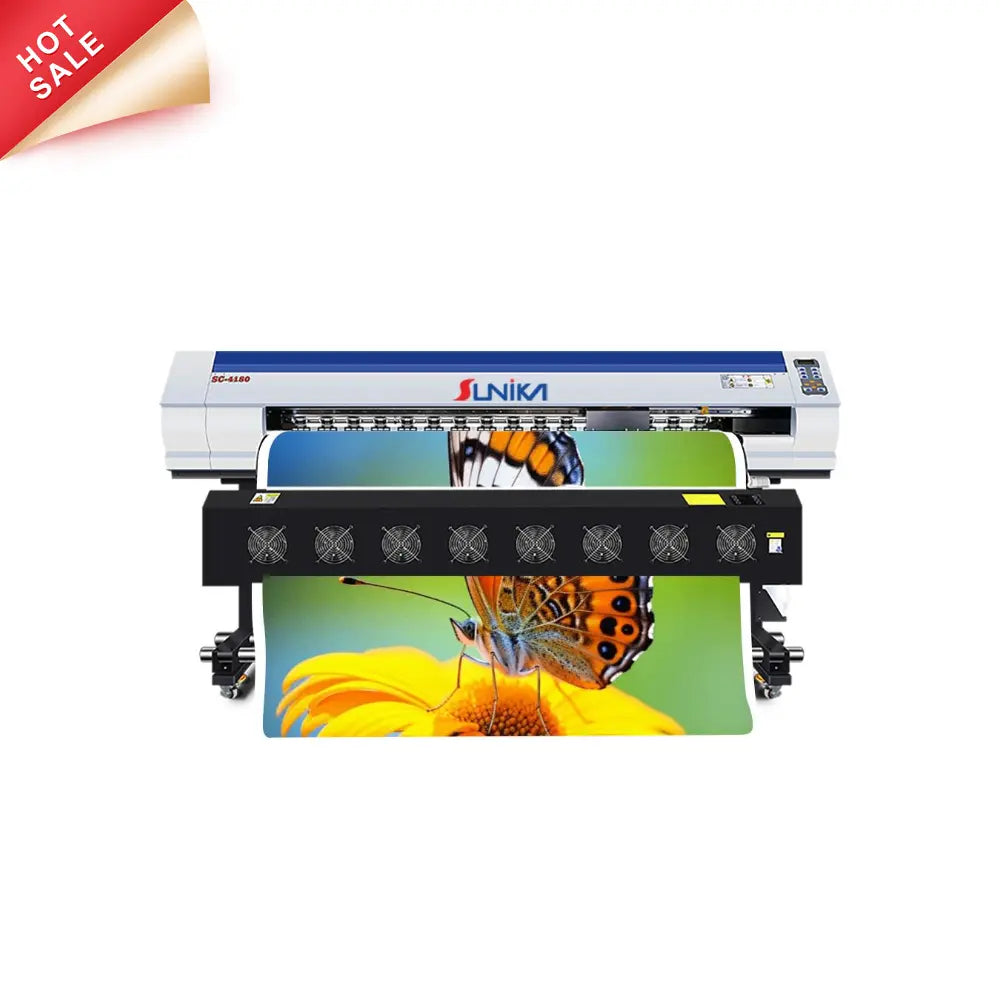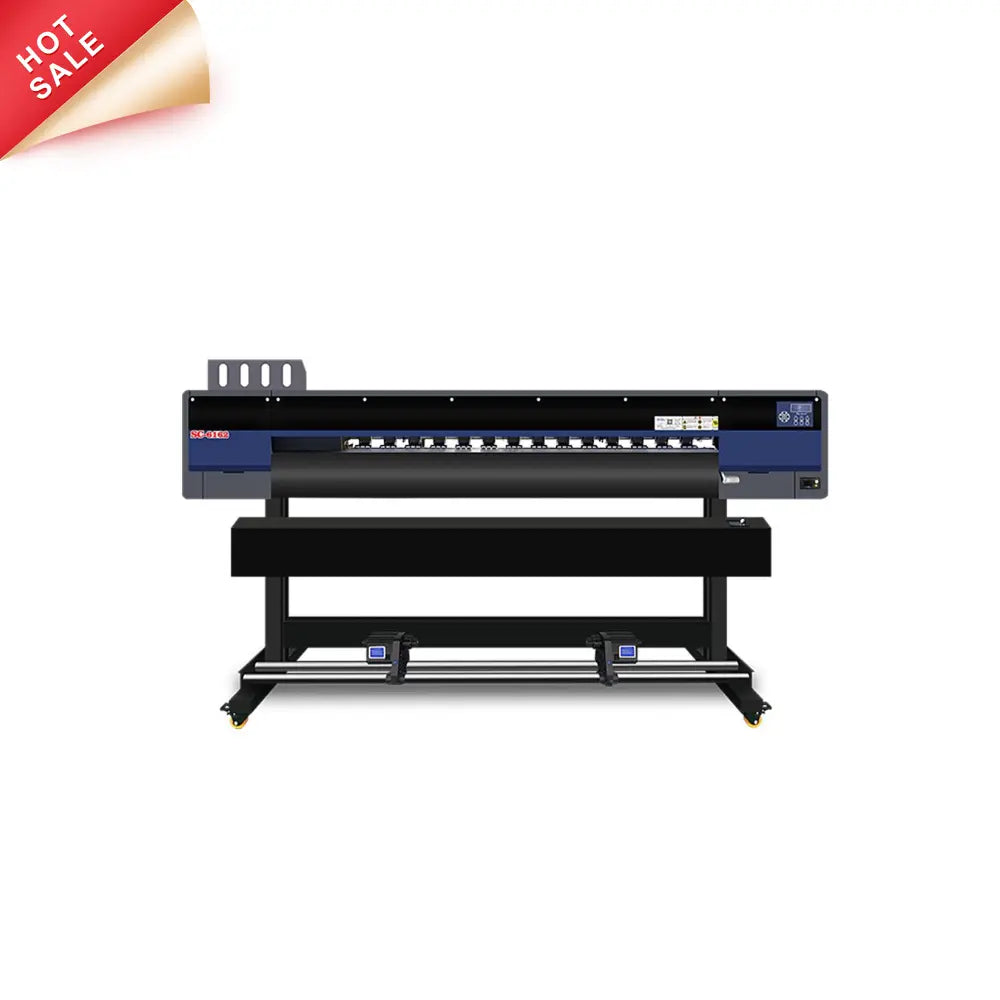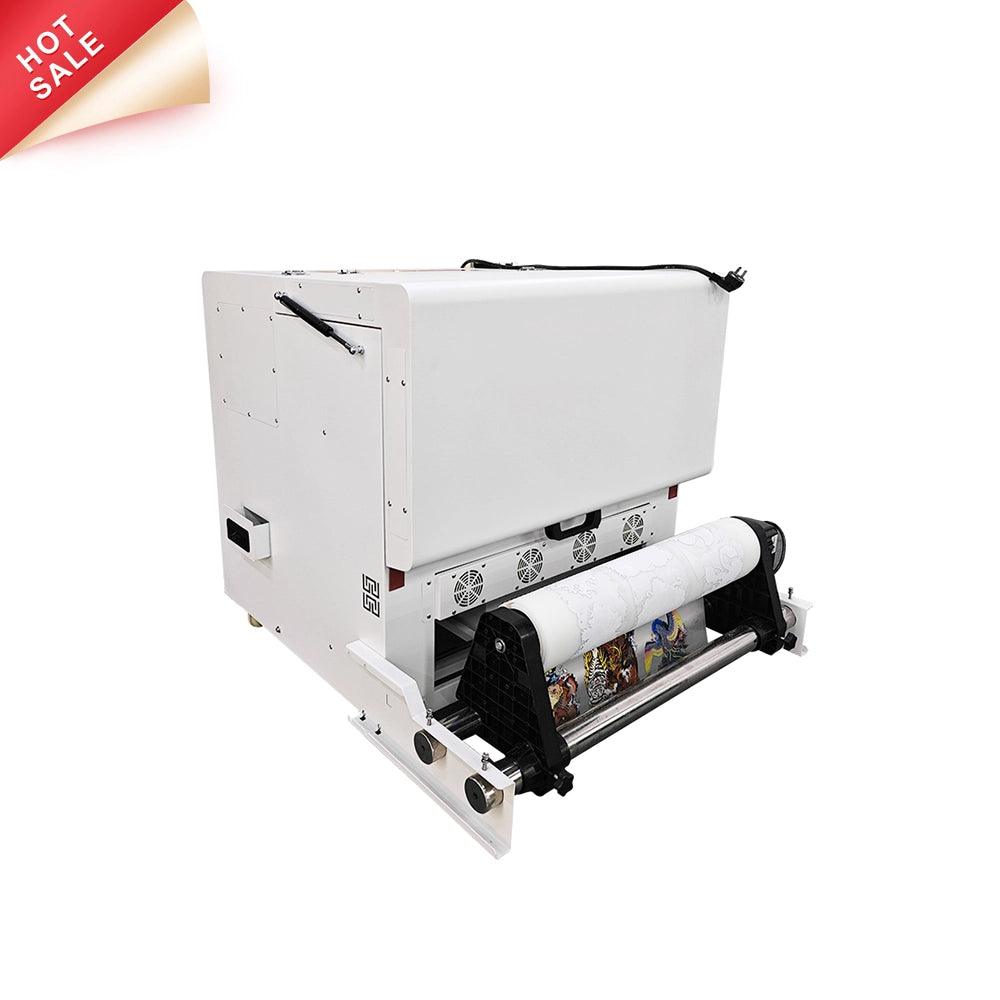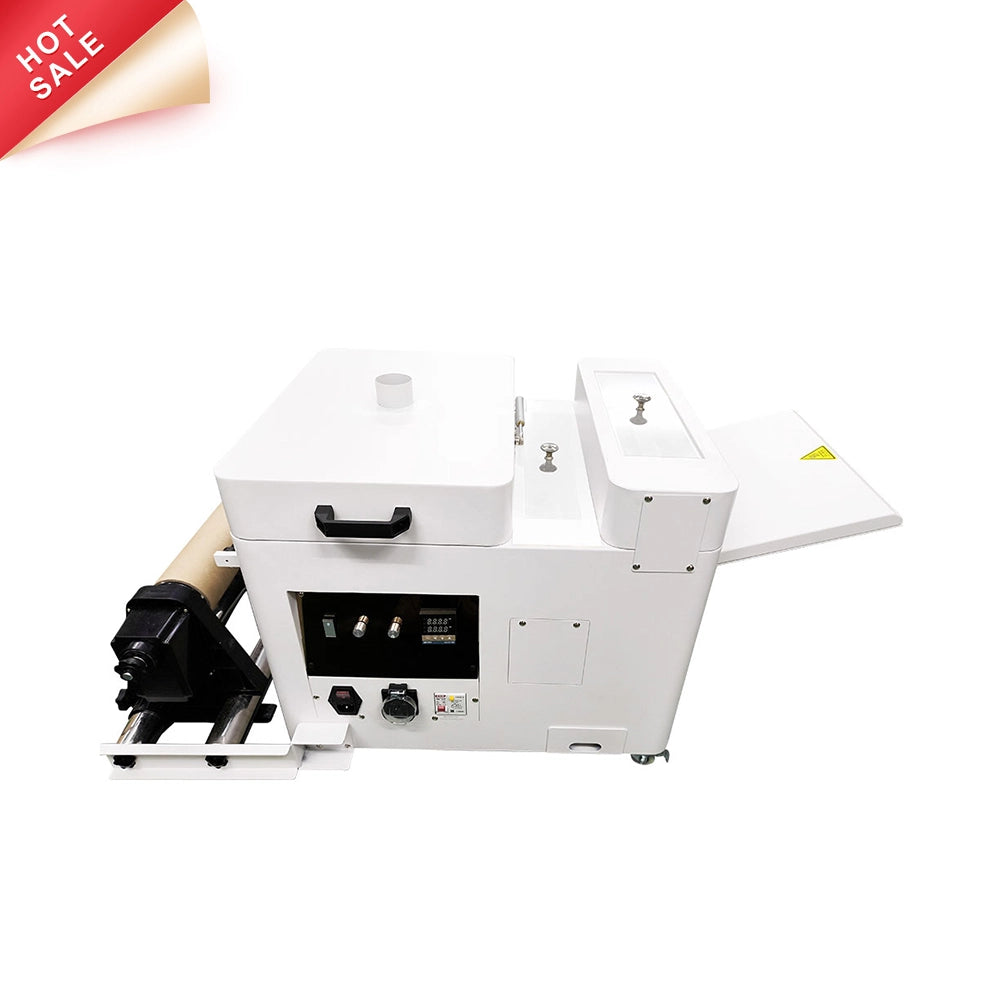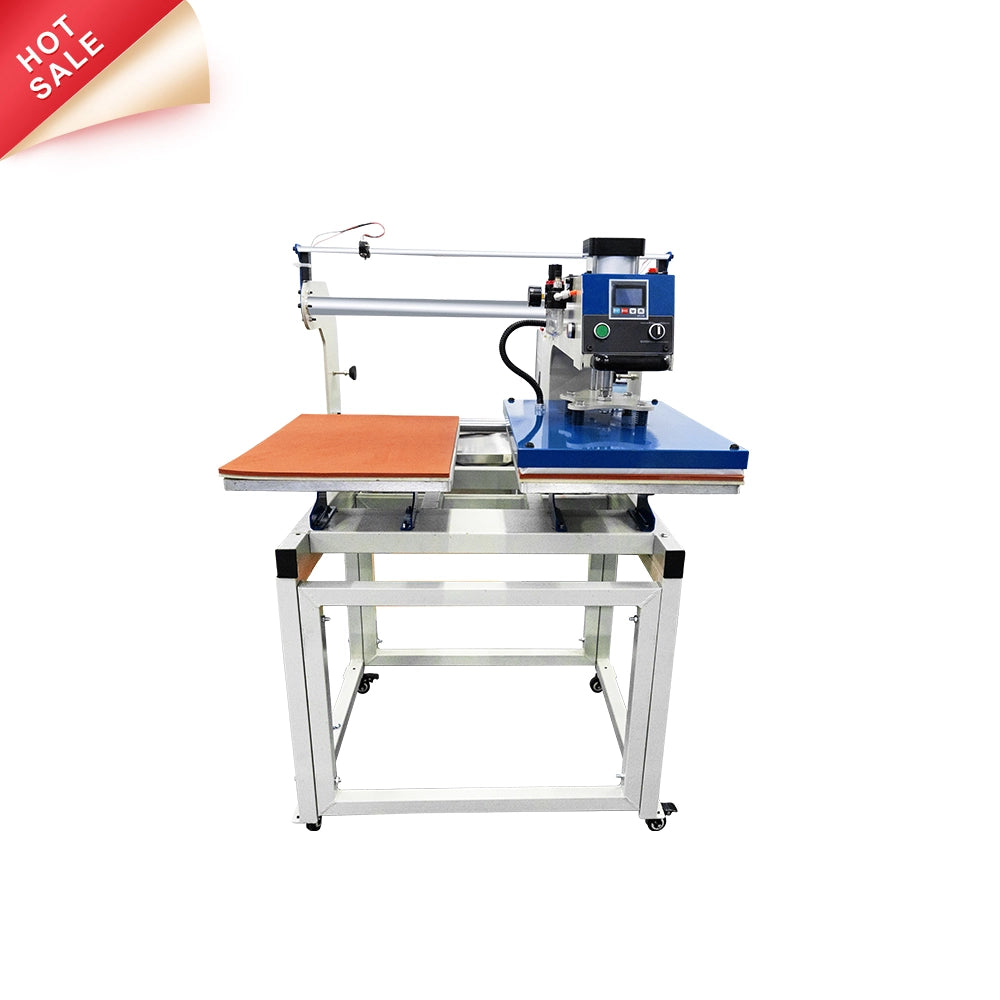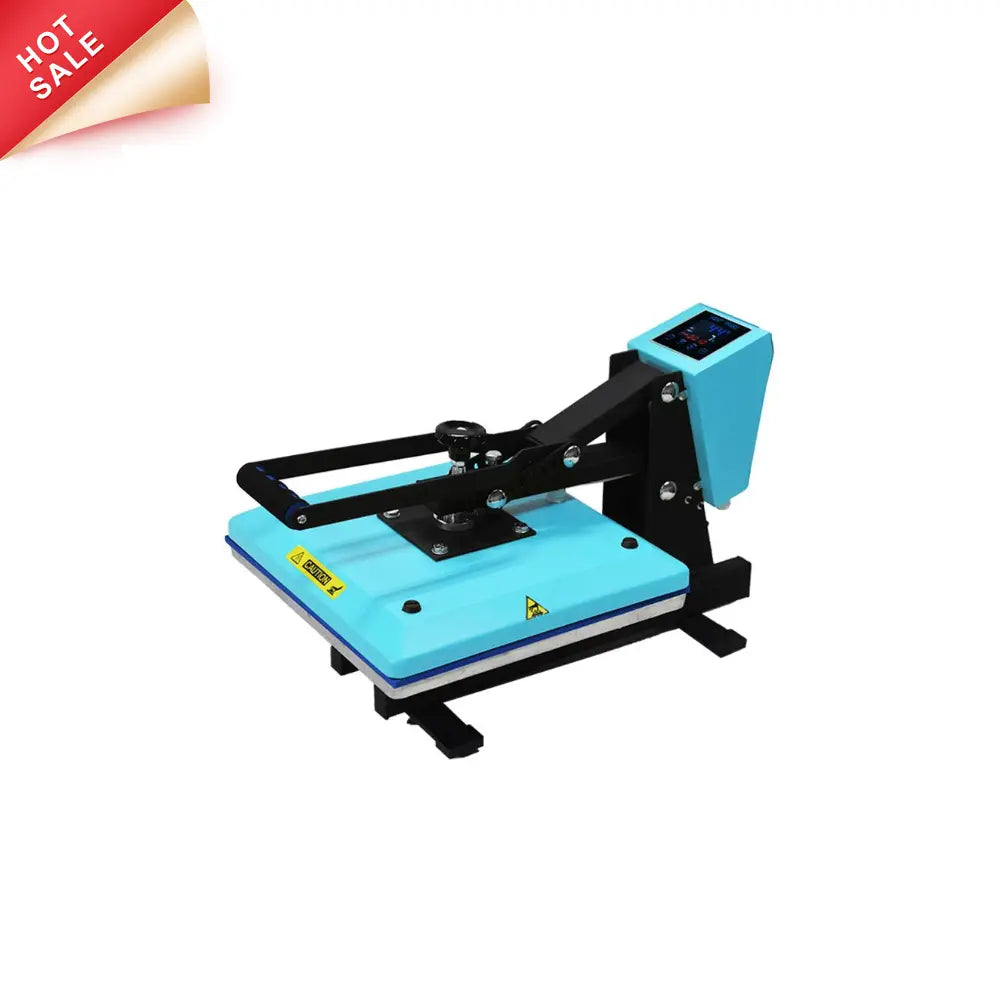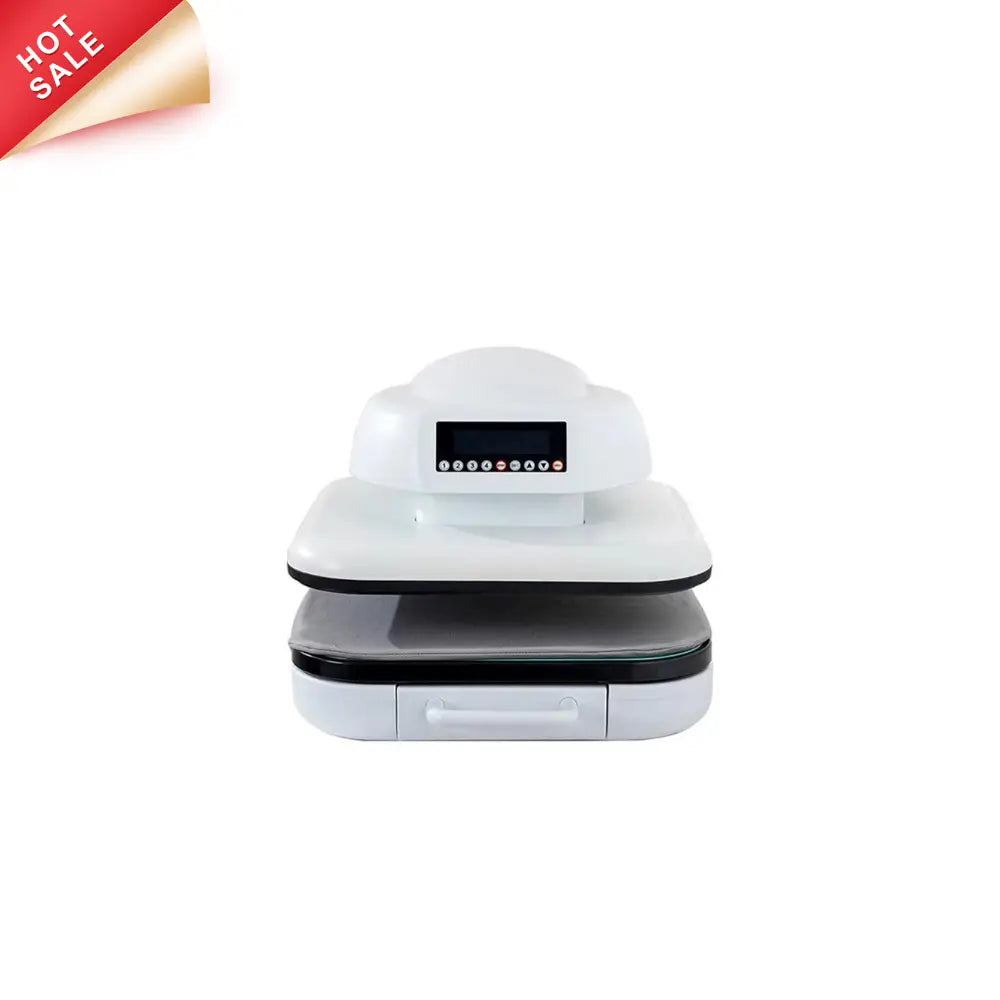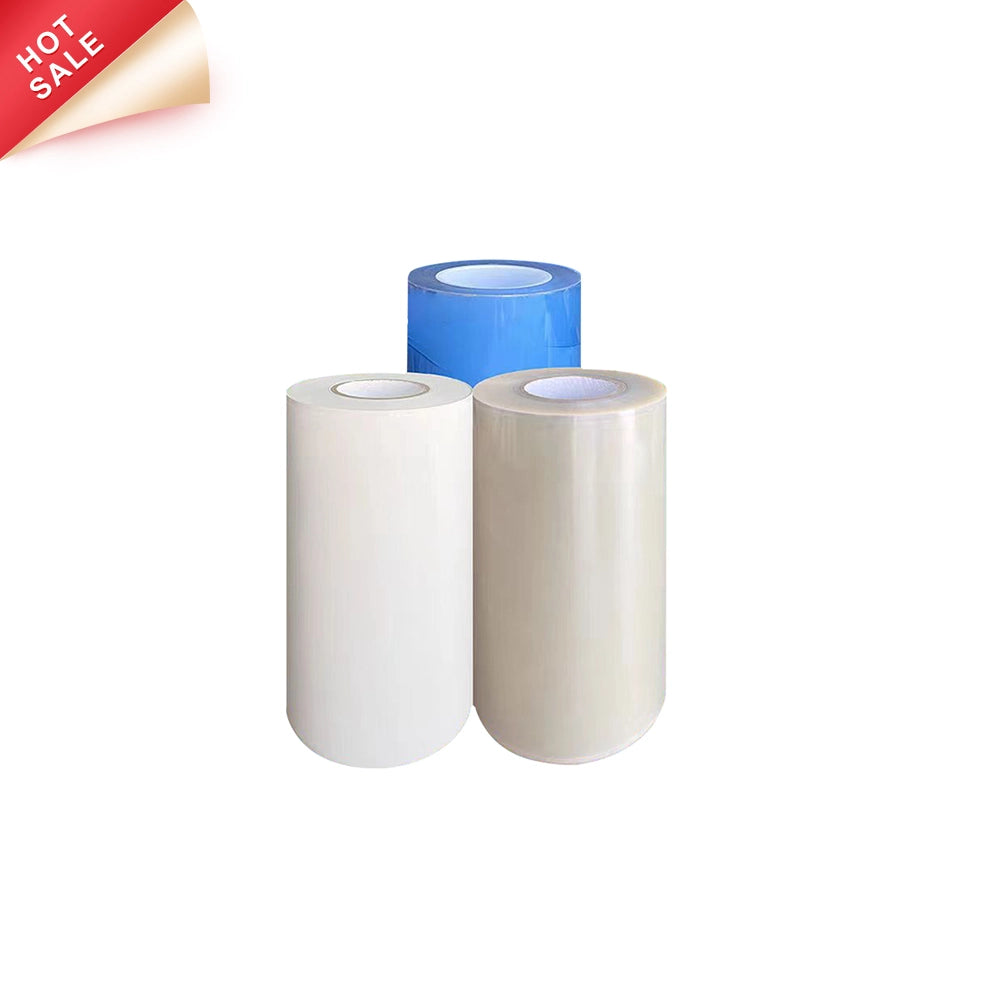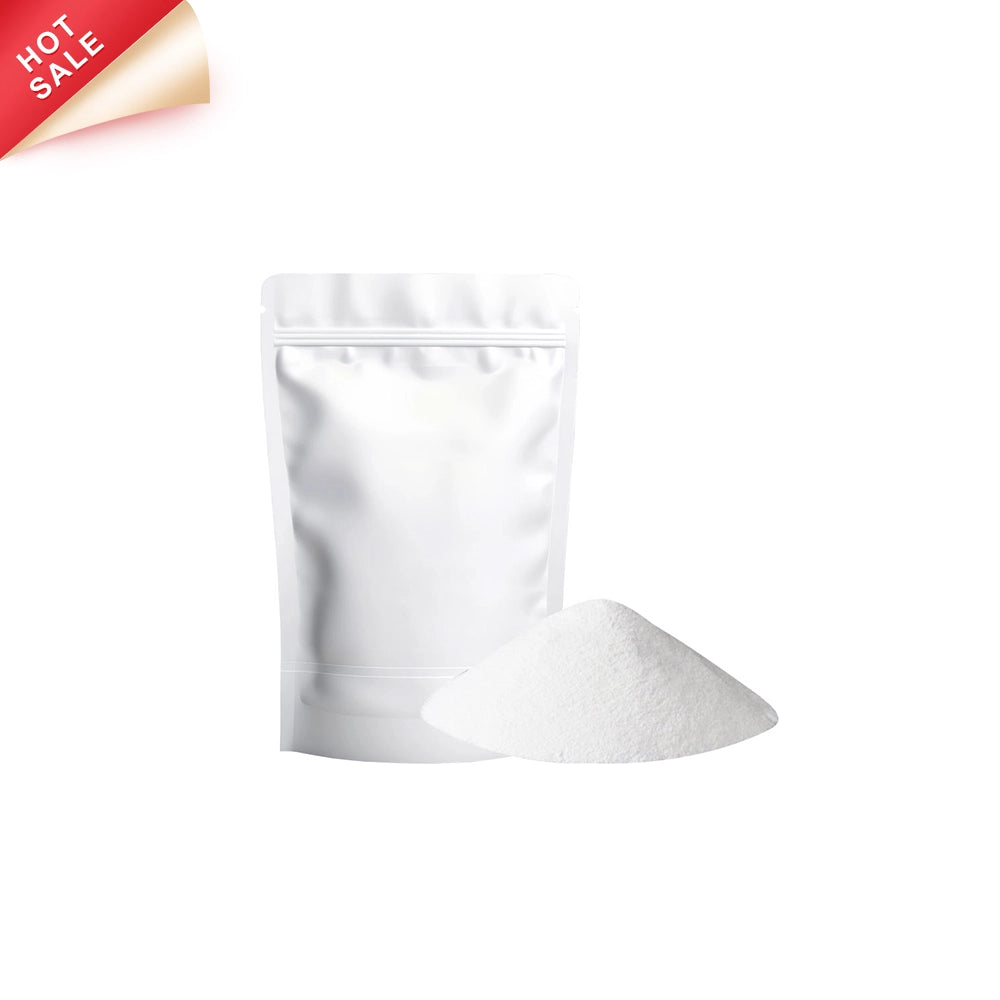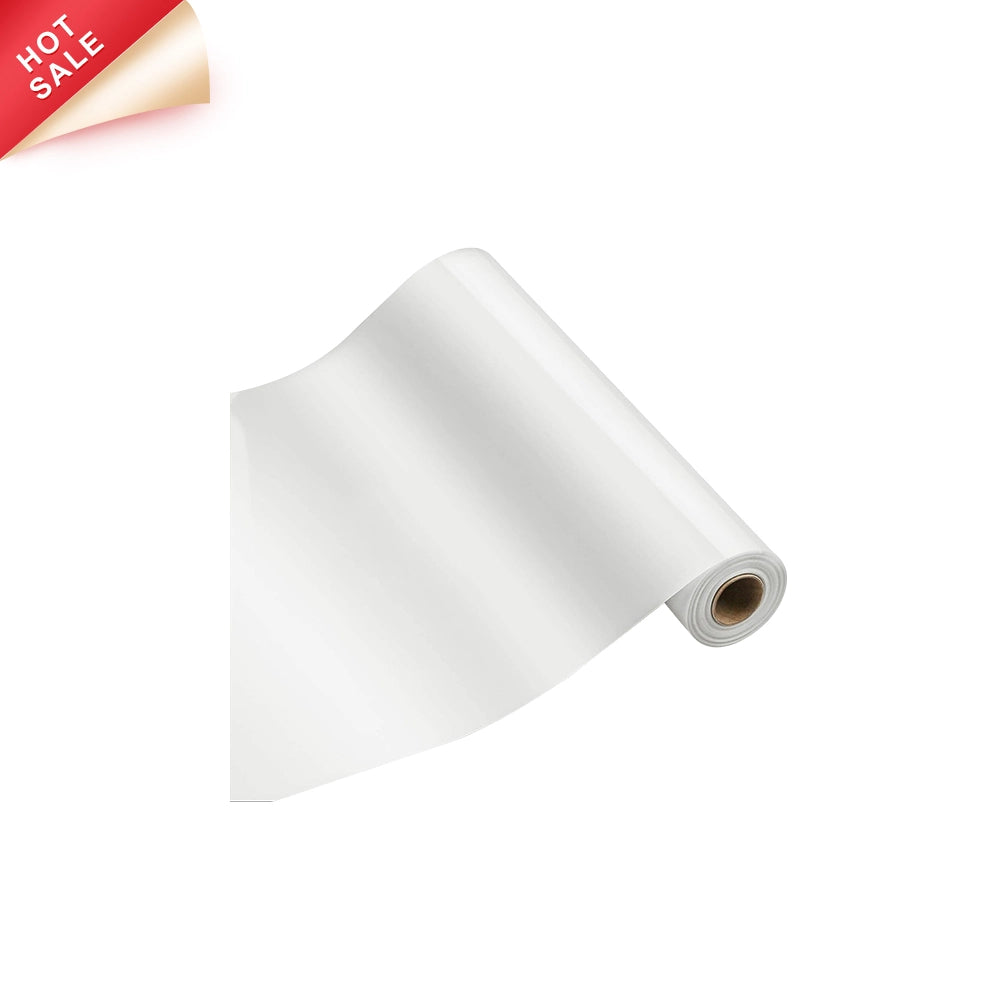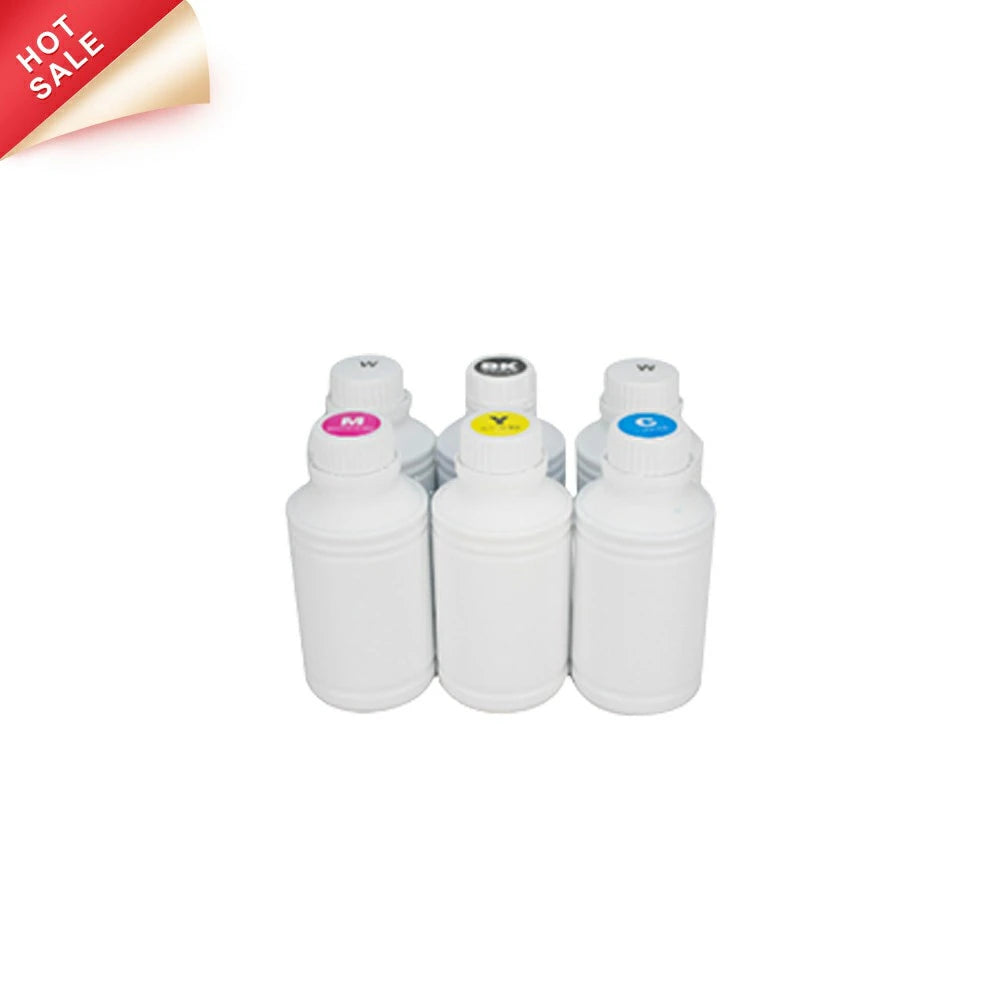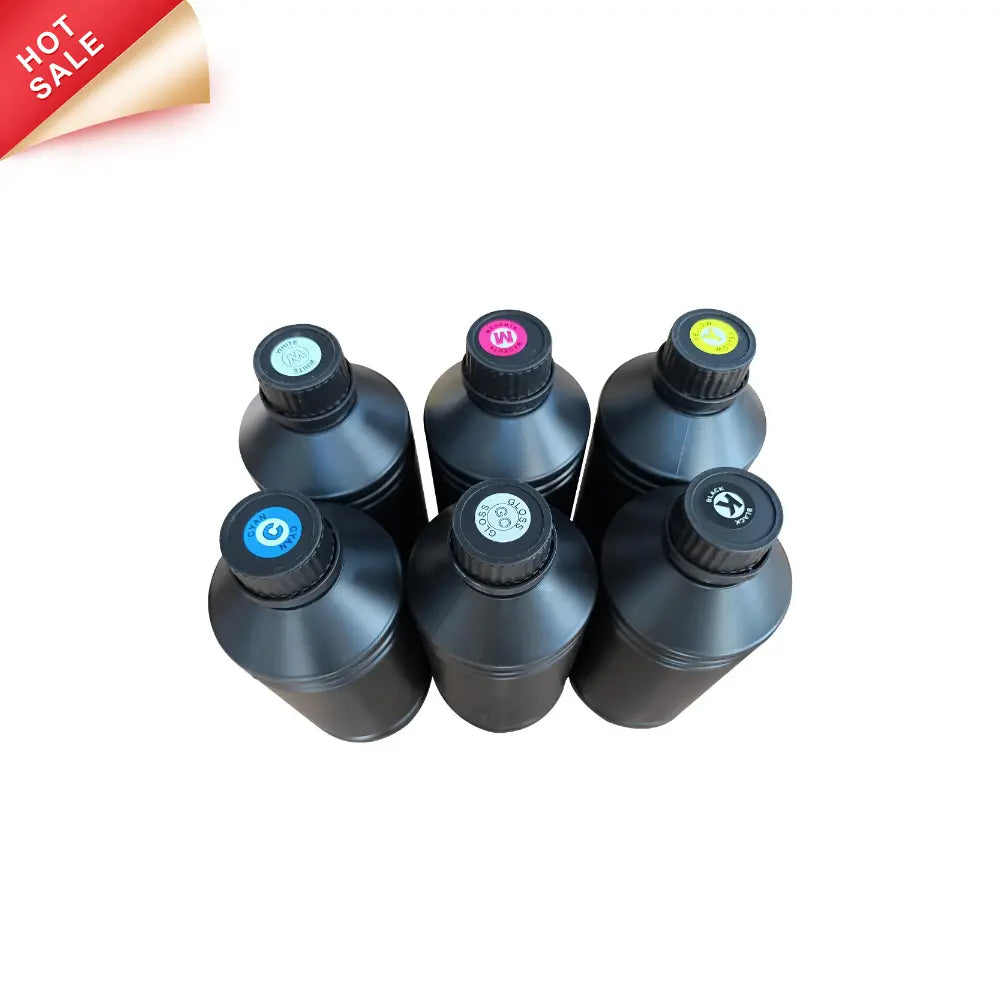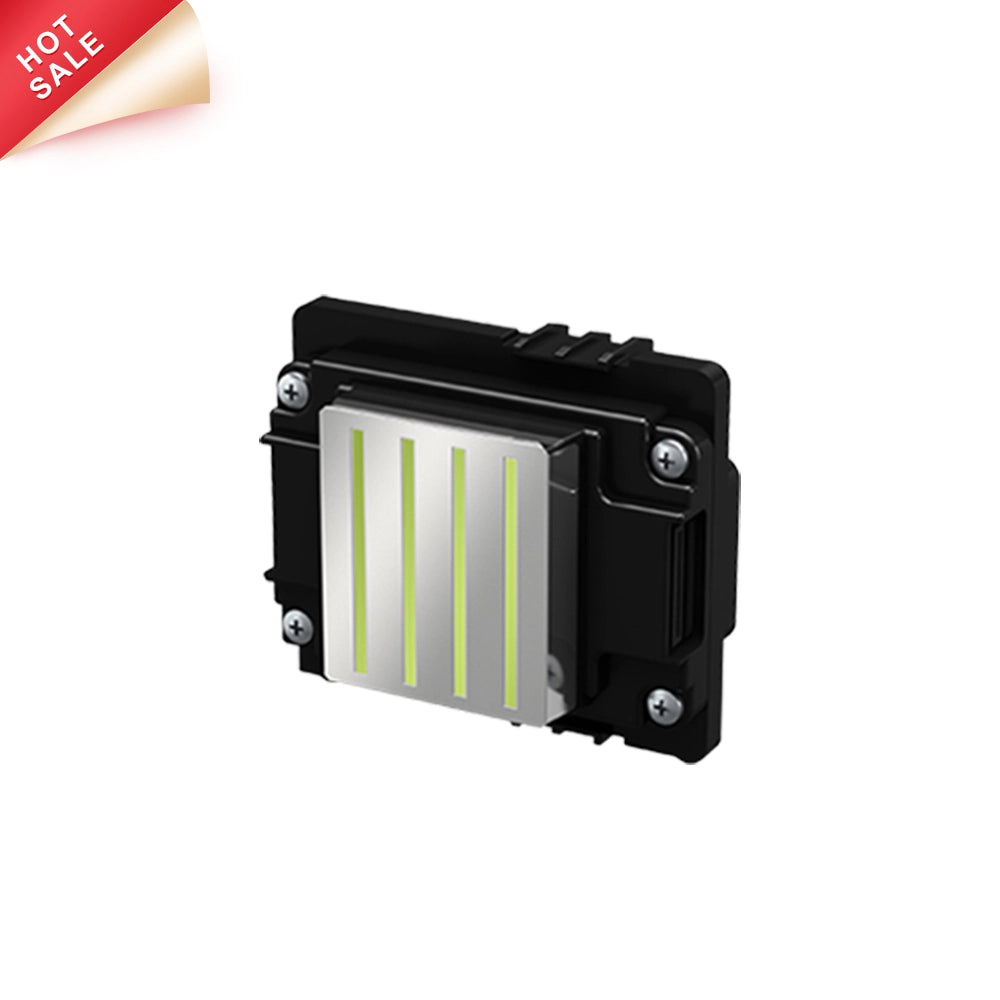Principle of Crystal Labels
There are two main processes for creating crystal labels:
- The first method involves layering glue, white ink, colored ink, varnish, etc., on release paper to form various patterns, which are then covered with a transfer film.
- The second method prints white ink, colored ink, and varnish directly onto adhesive polymer materials, commonly known as AB film or PET crystal film. The transfer film is then used to transfer the pattern onto the surface of objects.
Due to their three-dimensional, transparent appearance resembling crystal, they are called crystal labels. These labels are versatile and can be used instantly after peeling off, providing a quick solution to printing irregular shapes and overcoming the limitations of flat spray printing. Crystal labels offer significant advantages over regular stickers, such as vibrant, bright patterns, rich colors, a strong three-dimensional effect, and high gloss. They are easy to transfer without leaving residue, making them a popular choice in the personalized advertising market.

Application Fields of Crystal Labels
Crystal labels work best on rigid and smooth surfaces like packaging boxes, tea cans, paper cups, notebooks, metal tins, plastic, stainless steel, and ceramics. While they are versatile, they are not suitable for uneven or rough surfaces such as items with sharp edges. It is also not recommended to apply them to soft materials like fabrics or leather, as the adhesive strength and durability decrease significantly.

Characteristics of Crystal Labels
- Easy to use: The labels can be applied as needed, peeled off, and used immediately. They offer a quick solution for printing on irregular shapes, bypassing the limitations of flat spray printing.
- Vivid colors: Crystal labels are bright, rich in color, highly three-dimensional, and glossy. They are easy to transfer and separate without leaving glue residue.
- Environmentally friendly and odorless: Compared to solvent-based inks or screen printing, UV inks significantly reduce pollution and unpleasant odors.
How to Use Crystal Labels
- Step 1: Ensure the material of the item to be labeled is compatible with crystal labels. The surface should be smooth without bumps. Clean the surface with alcohol.
- Step 2: Peel off the transfer paper at the bottom of the crystal label. High-quality labels should separate smoothly, ensuring successful transfer.
- Step 3: Use a hard card or scraper to press the surface firmly to remove air and increase adhesion.
- Step 4: Remove the top layer of film by gently peeling it from the edge at an almost 180-degree angle. Avoid pulling at a smaller angle, which could cause the label to come off.

Lifespan of Crystal Labels
The lifespan depends on the surface and environment where the label is applied. On smooth, hard surfaces in indoor conditions, the label can last long-term. However, exposure to outdoor elements, frequent friction, or high temperatures (e.g., dishes or hot cups) can cause the label to peel off within a month. Labels applied to soft materials may not last as long, becoming disposable.
How to Choose Printing Materials
AB film consists of three layers: a protective film on the surface, a crystal film in the middle, and a backing paper at the bottom. The quality of the backing paper is crucial for transferring the design.
- High-quality backing paper should have proper adhesion and strength, easily separating the pattern. It must also have stable chemical properties to prevent warping due to temperature and humidity changes.
Common types of backing paper include transparent and white options:
- Transparent backing paper: Smaller in size and lighter, it allows easier monitoring of the printing process. However, it requires higher precision in the printer's feeding system to prevent wrinkles.
- White backing paper: Environmentally friendly and provides better display quality due to its white background. However, it is bulkier and heavier, with limited visibility during printing.
To choose the right backing paper:
- Use high-quality Singulair release paper.
- Ensure the texture is dense and uniform, with good internal strength and transparency.
- The paper should be resistant to high temperatures, moisture, and oil.
- It should hold the design firmly but separate easily during transfer.

Advantages
- Equipped with 4 printhead carriages and base plates, additional printheads can be added at any time.
- Powerful dual-drive paper collection system ensures smoother material collection.
- Automatic base plate heating feature included, which works well even in cold conditions.
- High-quality water-cooled LED curing system for more stable use.
- Integrated automatic height-adjustable moisturizing ink station for easy maintenance.
- Adjustable platform suction to handle different materials easily.
- 400W Leadshine stepper motor paired with high-precision reducer for accurate material feeding.
- Electric push rod design for roller lifting, avoiding issues caused by the absence of an air source.

